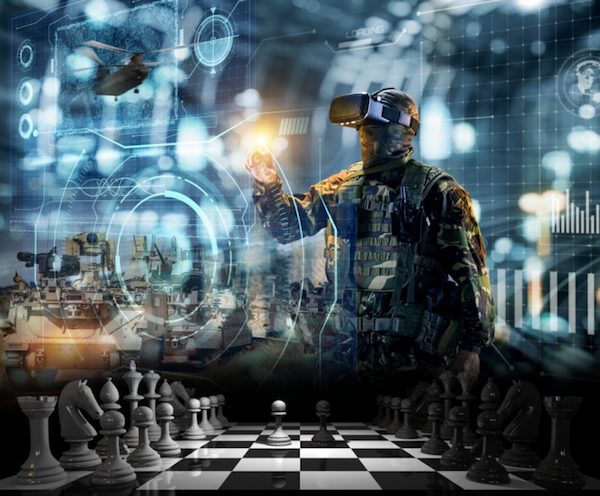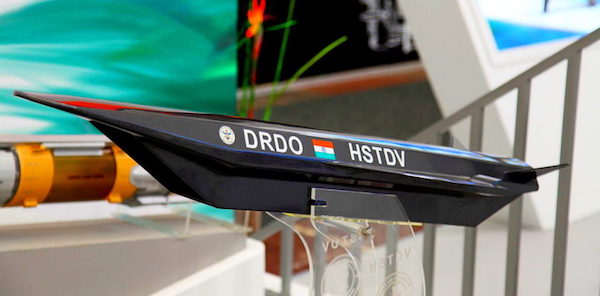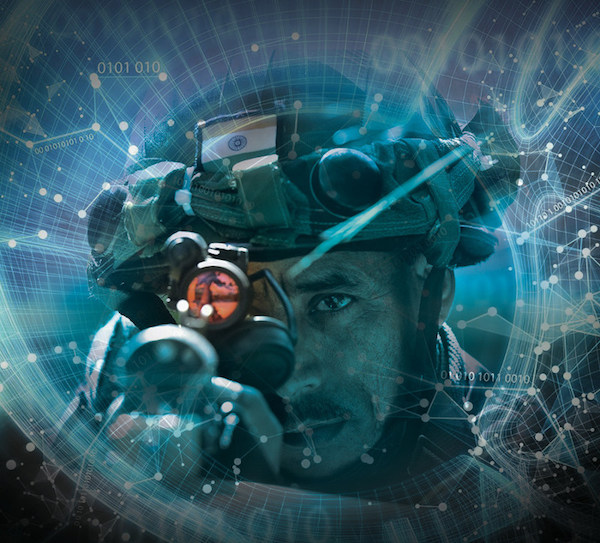The impact of Artificial Intelligence (AI) on modern warfare cannot be marginalized in the world of evolving digital infrastructures of states. The application of emerging technologies in the field of security and defense has created a strategic environment where leaders of various nations have started upgrading the conventional structure of armed forces. The quest for improving strategic muscle against rival nations has become a moving force behind the states’ growing tendencies towards applying AI in the defense sector. In the growing acceptance about the role of AI-supported military equipment, the security dilemma between India and Pakistan is not an exception. Growing India-Pakistan tendencies’ tilt towards the strategic application of AI has intensified the regional security environment. The decades-long hostility between both neighbors has led their leaderships to further polish their strategic muscles with the help of modern technology. Both nations have started discussing the significance of modern warfare technology in their existing national security designs. With time the prevailing security dilemma propelled both to enhance their defensive capabilities an intense security situation in the nuclearized subcontinent has disturbed the regional strategic equilibrium due to the rise of modernized military technology and its appreciation worldwide.
The combination of military modernization and innovative technologies has pushed the leaders of both nations towards AI, who intend to empower their conventional armed forces with technologically advanced weapon systems. The adaptation of innovative technology in the defense sector for the modernization of armed forces is inherited in the strategic positions of both competitors because India wants to become a hegemon in South Asia, whereas Pakistan has preferred to counterbalance its offensive nuclear neighbor. The defensive approach of Pakistan has convinced its government to take security measures against India’s increasing belligerent approach, which incidentally is the key factor behind New Delhi’s quest for improving its strategic capabilities in the domain of AI. Thus, the emergence of AI technologies in the South Asian region in the presence of an unending India-Pakistan conflict is gradually becoming an essential feature of South Asian regional politics. The South Asian security environment is going to witness a new arms race in the field of AI due to India’s growing interest in technological advancement. The prevailing scenario of the AI arms race fundamentally originates from the Indian quest for modernizing its arms capabilities.

The Indian quest for AI and its application in security and defense is inherited in the very nature of emerging technology for non-peaceful purposes. Due to its unique characteristics and extraordinary performance Indian policymakers have recognized the role of AI in the defense sector. A formal document of the India Army, Land Warfare Doctrine-2018, officially recognized the significance of AI in Indian defense planning. A brief 13-page document issued by the Indian Army in December 2019, tried to provide a glimpse of Indian planning for adopting AI technologies in the mainstream security arrangements of its forces. While discussing the “Human-Machine Teaming” on page 09, the formal document mentiones plans for modernization of the Indian military. The document says, “At the core of our future military planning will be the effective integration of soldiers, Artificial Intelligence (AI) and Robotics into war-fighting systems that exploit existing capabilities for success in battle. The corresponding optimization will offset an increase in operational effectiveness due to technological development in all fields”. On page 11 of the same document, the rise of Techno-Centric Environment demands New Delhi modernize its armed forces by adopting various technological advancements. The document says, “the Indian Army will continue to modernize to fight in a techno-centric combat environment which is likely to emerge in futuristic conflict scenarios due to revolution n key technologies like Artificial Intelligence, Quantum Computing, Nano Technology, High Energy Lasers, Directed Energy Weapon, Hypersonic Weapons etc. so as to cater for high technology threat of Swarm Attacks including Drones, Laser an Pulsed Microwave Weapon Systems and Injection of False Information.”
The growing reliance on technologically supported sophisticated weapon systems is emerging from the Indian vision of bringing hi-tech technology in its formal arms structure, empowering New Delhi’s strategic capabilities against China and Pakistan. India’s bilateral hostile designs against Islamabad and Beijing have resulted in New Delhi’s opposition to the emerging China-Pakistan economic cooperation. The growing ties for enhancing greater economic cooperation in the South Asian region have been translated by India into a serious security threat. In response to perceived threats from neighboring nations, the Indian security establishment has planned to apply AI technologies for military purposes. India has engaged the Defense Research & Development Organization (DRDO) to empower the Indian vision for acquiring cutting-edge defense technologies for the upgradation of its regular armed forces. Established in 1958, the DRDO has created the Centre for Artificial Intelligence & Robotics (CAIR), which is purely involved in research and development in AI. CAIR is also emphasizing on the development of “robotics, command, and control, networking, information and communication security leading to the development of mission-critical products for battlefield communication and management systems.”

Moreover, the objective of integrating different unmanned weapons systems into the mainstream military operations has resulted in DRDO’s intentions for formulating AI-powered robots through its CAIR lab. This lab is developing various robots with multiple functioning digital applications and has also been working on a project for developing Multi Agent Robotics Framework (MARF). The MARF is primarily designed to equip the Indian army with different robots capable of performing various challenging tasks. Besides the functions of MARF, the Indian army has already built many robots such as “Wheeled Robot with Passive Suspension, Snake Robot, Legged Robot, Wall-Climbing Robot, and Robot Sentry.” An exclusive focus on attainment of autonomous weapon capabilities has enabled New Delhi to introduce various domestically produced unmanned arms devices such as Daksh (Remotely Operated Vehicle), NETRA (Unmanned Aerial Vehicle), Daksh Mini (Confined Space Remotely Operated Vehicle), Daksh-Scout (Surveillance Remotely Operated Vehicle), and UXO handling Robot (Unexploded Ordnance Handling Robot). The DRDO’s mission is keeping all forces equally upgraded and resulted in updating its land forces by providing the Muntra to the Indian army, an unmanned armored vehicle, having three variants (Muntra-S, Muntra-M, and Muntra-N). It was the first unmanned Indian tank capable of performing operations in an extreme environment without human involvement. Furthermore, the DRDO’s CAIR lab has started working on robot perception, a critical element of intelligent machines.
The department of DRDO has developed various kinds of autonomous and semi-autonomous weapon systems equipped with multiple armed and unarmed objects suitable for functioning in challenging military operations. The Indian pursuit of developing advanced technological weapons with the help of AI is dependent on New Delhi’s foreign relations the Indian government has always tried to cultivate cooperative and collaborative ties with the great powers. As a result, it has developed cooperative bilateral ties with the technologically advanced and economically developed nations, which would support India in security and defense. So, India is actively developing multidimensional strategic ties with advanced nations across the globe. Apart from taking various policy measures at the domestic level and involving private organizations in the defense industry through the signing of Memorandums of Understanding, the DRDO tries to explore and secure international opportunities from around the globe. The DRDO has established the Directorate of International Cooperation (DIC) to supervise and manage international cooperation activities. It formally performs the functions of a facilitator for helping the DRDO’s labs in maintaining various activities concerning global coordination. The DIC emphasizes the cultivation of bilateral collaborative interactions with friendly countries, which will enable New Delhi to improve its existing defense capabilities. Therefore, New Delhi will be able to produce or acquire AI technology for non-peaceful purposes with the help of technologically advanced nations. The pursuit of military modernization has led New Delhi to maintain various levels of strategic interaction with the outside world.
Without seriously considering the impact of India’s massive modernization generally and AI defense technology specifically, the Indian quest for increasing its position over South Asia’s territorial and maritime affairs has introduced the AI technology for military purposes in the nuclearized subcontinent. In other words, it intends to launch an unstoppable AI arms race which could undermine the regional vision of stability in South Asia. Any competition in the AI domain usually refers to a situation between two or more states for the upgradations of their regular arms forces with the support of hi-tech equipment. According to the conceptual description of AI arms control, the relevance of the AI arms control to the South Asian conflicted politics can be seen in the India-Pakistan strategic competition. India is rapidly developing and deploying AI-supported weapons against its neighboring states such as China and Pakistan. In order to counter Pakistan’s emerging economic cooperation with China, India wants to secure support of extra-regional powers in the field of AI technology and looks towards Washington where the Biden administration intends to develop a close technological partnership with India. The growing India-US technology alliance is fundamentally a response to Chinese investment in the AI industry. While the Indo-US AI partnership is purely a bilateral matter between the governments of both nations, its impact on the regional security environment will tarnish peace and stability in the South Asia region.
Indian insecurities have convinced Indian leadership about the non-peaceful use of AI, the support of various sophisticated weapon systems will enable New Delhi to advance its domestic IT industry as well. Moreover, New Delhi is considered to be a potential market for foreign investment internationally and an appropriate place for future investment in the IT sector. The DRDO has communicated Indian intentions of empowering its arms forces with scientifically advanced weapons. The formal documents of the Indian Army also mention the need for acquiring advanced technologies to build automated weapons capable of ensuring accuracy and efficiency in military operations. All these developments provide a comprehensive picture of the Indian way of military modernization. New Delhi’s desire for modernizing its military is intended to launch an AI arms race in the region because of Pakistani and Chinese responses to Indian weaponization based on new technologies. Given the scenario mentioned above, the greater responsibility lies on the international community, which actively supports the vision of peace and stability in the South Asian region parallel to maintaining strategic partnerships with India. Instead of understanding the hostile nature of India-Pakistan bilateral interaction cemented in multiple areas of disagreement in regional and international politics, the great powers have started supporting India in the field of AI. The Biden administration recently announced a plan to collaborate with India in AI technology and its implementation in the defense sector. In addition to AI technology an interstate interaction with the developed world will allow India to get various other technologies for defense use. In response to the increasing Indian weaponization foreign states need to realize the Indian role in its home region. The impact of New Delhi’s massive weaponization is bound to have quite a damaging effect on the regional politics generally and neighboring states of India particularly. A balanced and objective role of the international community can secure the future of a stable South Asia by taking timely measures. Such measures can avert the rising AI arms race in South Asia and its devastating effects on the regional security between New Delhi and Islamabad.





